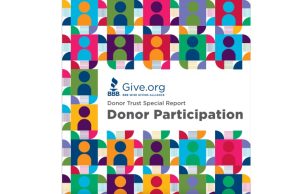Hundreds of millions of dollars of grants and contracts have found their way to nonprofits across the country via the impact of the American Recovery and Reinvestment Act of 2009 (ARRA or Recovery or Act). It hit its peak in 2010 and 2011 and organizations are feeling the impact.
Expected are the programmatic implications of unprecedented funding levels but the back-office implications have also been notable. As traditional recipients of federal funding, nonprofits are accustomed to grant administration and compliance. You are also accustomed to annual Office of Management and Budget (OMB) A-133 compliance audits. Both look and feel differently now, in the era of ARRA and that is a by-product of the transparency and accountability themes built into this Act.
Did you receive recovery money or not? Step one in your process of demonstrating transparency and accountability is affirming you do, in fact, have ARRA awards in the first place. Generally a simple determination for prime recipients of awards from federal agencies, it’s not quite so easy for those who receive their federal awards indirectly.
Many ARRA awards go straight from federal agencies to state or local governments or even other nonprofits before they work their way down stream to other nonprofits. In these scenarios, a prime recipient or pass-through entity actually has the responsibility to identify a sub-award as ARRA funded to the next level down. Many do a very good job of doing so but some of your organizations report not being told that a sub-award is an ARRA award.
As a prime recipient or sub-recipient who is responsible for complying with federal laws and regulations, it is critical you know if your award is a Recovery award. In addition to having to report expenditures of ARRA awards separately on your Schedule of Expenditures of Federal Awards (SEFA) you also have incremental compliance requirements to which to adhere.
The process of identifying an award as an ARRA award might mean extra effort on your part to press your pass-through agency for this information if they are not forthcoming with sub-award details. In addition, the Catalog of Federal Domestic Assistance at www. cfda.gov and Appendix 7 of the OMB’s 2011 Compliance Supplement at www.whitehouse.gov/sites/default/files/omb/circulars/a133_compliance/2011/app_7.pdf are helpful resources.
Your use of a federal ARRA award is chronicled at www.recovery.gov, a website whose existence was a requirement of the Act. This is where the transparency theme becomes real, as nearly every detail about the expenditure of your ARRA awards is available for the taxpaying public to view along with the jobs funded by your awards.
Much of the data populated in the website gets there by virtue of your quarterly reporting process, known commonly as Section 1512 reporting in honor of Section 1512(c) of the Act. This reporting is required by prime recipients of Recovery awards and is one of the most significant new requirements for which non-profits have had to develop processes and internal controls. The quarterly reporting requires three months of results be reported each quarter and is filed within 10 days after the end of that quarter.
For example, your March 31 reporting will be your ARRA award data for the three months ending March 31. Many organizations have struggled with this tight reporting deadline and have adapted by using a lag methodology such that a March 31 reporting will include three months of data through February 28. In the 2011 Compliance Supplement, the federal Office of Management and Budget (OMB) clarified that such a lag reporting methodology is viewed to be non-compliant.
It is the expectation that quarterly reporting represents data of that three-month quarter, even if estimates have to be used and then refined later during the continuous correction period. If quarterly reporting is a responsibility of your organization, you will want to be aware of this interpretation.
While the quarterly Section 1512 reporting is one of the more significant compliance requirements for recipients, there are others of which you should be aware. All ARRA award spending needs to be tracked separately from non-ARRA spending in accounting records to facilitate separate reporting on your SEFA. While a reasonable expectation, this separate tracking can be challenging when multiple federal awards fund the same project and some are Recovery-funded while others or not.
A common scenario plays out in many organizations when a non-ARRA federal award with a particular CFDA number is followed by an ARRA award with the same CFDA number. As tempting as it might be to combine the accounting for these similar awards, they do need to be tracked separately. In addition to separate tracking, there are unique rules associated with allowed activities including making sure your awards are not funding swimming pools, aquariums and casinos. Yes, the Act is that specific.
Some Buy-America provisions exist for awards funding public works projects and incremental sub-recipient monitoring provisions are in place if your organization passes ARRA awards down to sub-recipients. It is critical that you develop processes and internal controls around these new requirements in order to demonstrate accountability.
If you suspect your annual compliance audit will be impacted by ARRA, you would be correct. Recovery-funded federal awards are reported on your SEFA separately from your other federal awards. The federal community wants your external auditors to see them and audit them.
Every year, external auditors select certain federal programs to test as major programs and render compliance opinions. The major program selection process is one established by OMB. It is a formula that focuses on the size of awards, the prior audit results, if applicable, and the risk associated with those awards. The OMB has designated large ARRA awards as high risk, thus, influencing major program selection. As a result, many of these new ARRA awards are major programs and are being audited. Some nonprofits have seen the number of audited awards double and even triple as a result of this high-risk designation. The compliance audit focuses not only on the typical compliance requirements common to all federal awards but also those incremental compliance requirements highlighted above.
Your organization will need to prepare differently for your annual compliance audit given these changes. That preparation includes being able to demonstrate compliance but also being able to document those new processes and internal controls put in place to ensure compliance. You should prepare your SEFA early and be very diligent about identifying your ARRA awards in that document.
Be prepared that your annual audit might take longer than it has in the past given the new requirements and the cost could be impacted.
Finally, make sure your audit results are filed on time with the Single Audit Clearinghouse. While the filing deadline of the earlier of 30-days after audit report release or nine months after the end of the fiscal year has not changed, what has changed is the federal agencies ability to grant extensions for that filing deadline.
Extensions will be few and far between and if your organization files late, it cannot be a low-risk auditee for purposes of its next annual compliance audit. The implication of not being a low- risk auditee is more audit coverage for the next year. Clearly, the Federal government is using the annual compliance audit process as a key tool in the achievement of the accountability objectives of the Act.
This era of ARRA has been a notable one for many of you. For those early recipients of Recovery funds in 2009, you are to be commended for reacting so quickly to both the programmatic and administrative expectations set forth by the Act. For those of you who are new to this journey, you will no doubt rise to the challenge as well. Arming yourselves with the tools and knowledge to be accountable and transparent will make your journey a successful one.
***
Kim McCormick is a partner in Grant Thornton LLP’s not-for-profit industry practice and is based in San Francisco, Calif. Her email is [email protected]












